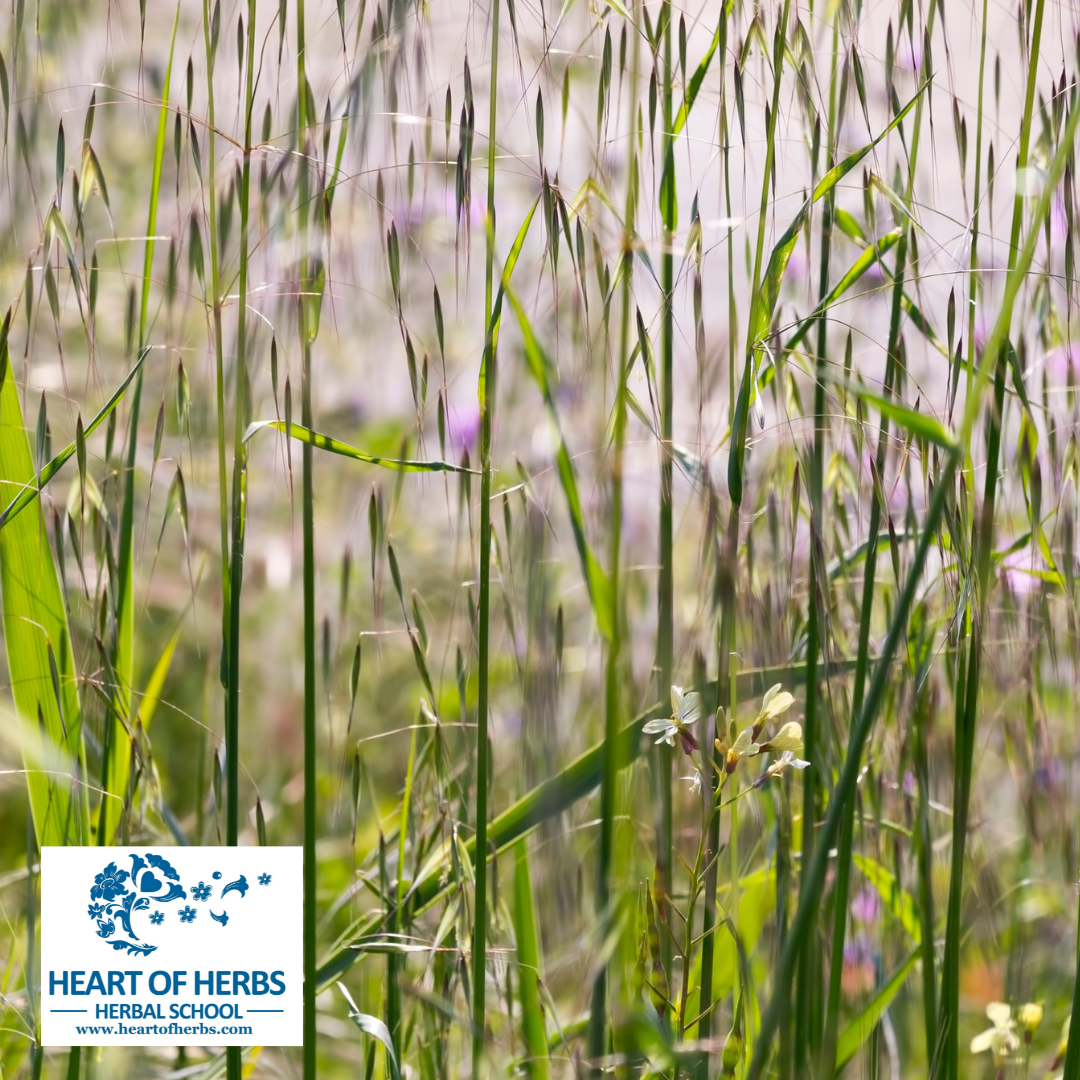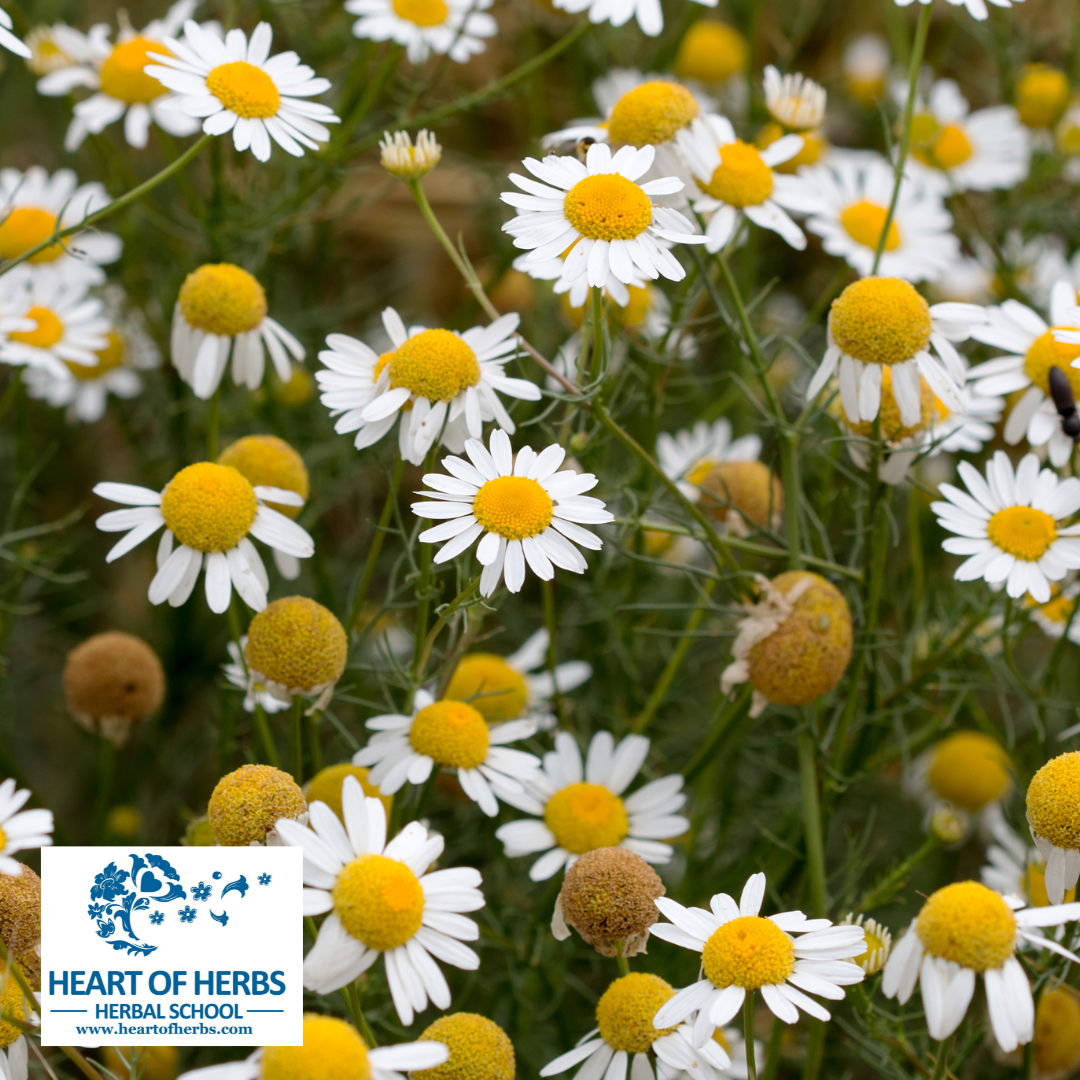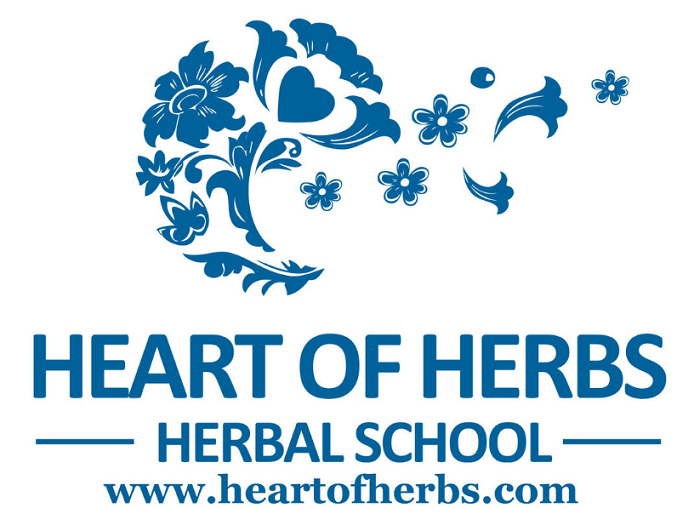1) Materia Medica
What it means: Your personal encyclopedia of herbs—profiles with names, actions, parts used, preparations, dosing ranges, energetics, safety, and notes from practice.
Examples: A page on Matricaria chamomilla (chamomile) covering “relaxing nervine, carminative, anti-spasmodic,” tea vs. tincture, and cautions.
Student tip: Aim for 150+ herbs over time. Include your own observations—not just copied info.
2) Tincture (with Menstruum, Marc & Ratio)
What it means: A liquid extract made by soaking plant material (the marc) in a solvent (the menstruum—usually alcohol + water). The ratio tells you herb weight to solvent volume (e.g., 1:2).
Examples: Fresh milky oats tincture 1:2 in 95% alcohol; dried root 1:5 in 40–60%.
Student tip: Always record ratio, solvent %, plant part, and date on your label.
3) Infusion vs. Decoction
What it means: Two water-based methods. Infusion = steeping delicate parts (leaves/flowers) in hot water. Decoction = simmering tougher parts (roots/barks/seeds).
Examples: Peppermint infusion; burdock root decoction.
Student tip: When in doubt: leaves/flowers = infusion; roots/barks = decoction.
4) Adaptogen
What it means: An herb that helps the body adapt to stress and supports resilience (usually gently, over weeks), without being a stimulant or sedative.
Examples: Withania somnifera (ashwagandha), Rhodiola rosea (rhodiola), Schisandra chinensis (schisandra).
Student tip: Pair with lifestyle basics (sleep, protein, movement) and reassess after 2–4 weeks.
5) Alterative
What it means: “Terrain-support” herbs that gradually nudge metabolism, elimination, and tissue tone toward balance—often supporting liver, lymph, kidneys, skin, and gut.
Examples: Arctium lappa (burdock), Galium aparine (cleavers), Urtica dioica (nettle leaf), Mahonia/Berberis spp. (Oregon grape/barberry).
Student tip: Think long game. Track changes in skin, bowels, energy, and tissue “puffiness.”
6) Carminative
What it means: Aromatic herbs that ease gas, bloating, and digestive spasm; they often improve appetite and comfort around meals.
Examples: Foeniculum vulgare (fennel), Zingiber officinale (ginger), Mentha spp. (mint), Matricaria chamomilla (chamomile).
Student tip: Lightly crack seeds (like fennel) before steeping to boost potency.
7) Demulcent
What it means: Mucilage-rich herbs that soothe and coat irritated tissues (GI, urinary, throat, sometimes skin).
Examples: Althaea officinalis (marshmallow), Glycyrrhiza glabra (licorice/DGL), Ulmus rubra (slippery elm).
Student tip: For maximum mucilage, use cool infusions (soak 4–8 hours) or long steeps.
8) Nervine (Relaxing, Tonic, or Stimulating)
What it means: Herbs that support the nervous system. Relaxing calm tension; tonic nourish over time; stimulating sharpen focus gently.
Examples: Relaxing—Passiflora incarnata (passionflower), Scutellaria lateriflora (skullcap).
Tonic—milky oats (Avena sativa tops).
Stimulating—Rosmarinus officinalis (rosemary) in small amounts.
Student tip: Match to the person: anxious and wired ≠ the same as fatigued and foggy.
9) Vulnerary
What it means: Herbs that promote tissue repair—especially skin and mucosa—often mildly anti-inflammatory or antimicrobial.
Examples: Calendula officinalis (calendula), Plantago major (plantain), Symphytum officinale (comfrey—external use only, not on open wounds).
Student tip: For first-aid kits, keep an infused oil or salve of calendula or plantain on hand.
10) Emmenagogue (Safety-Aware Term)
What it means: Herbs traditionally used to encourage or normalize menstrual flow—ranging from gentle circulatory support to stronger uterine stimulants.
Examples: Gentle: Matricaria chamomilla (chamomile), Melissa officinalis (lemon balm). Stronger: Artemisia vulgaris (mugwort).
Student tip: Always screen for pregnancy and use gentle options first; stronger emmenagogues are practitioner-level and timing-specific.


Bonus: Three more you’ll meet often
-
Hepatic/Cholagogue: Support liver function and bile flow (e.g., dandelion root, Oregon grape).
-
Analgesic (Anodyne): Ease pain without loss of consciousness (e.g., willow, ginger, arnica—topical).
-
Antimicrobial: Help the body resist or clear microbes (bacteria/viruses/fungi); many are also aromatic (e.g., thyme, oregano, tea tree—topical EO only).
How to make these terms stick
-
Create flashcards with the term, a one-line definition, two example herbs, and one safety note.
-
In your Materia Medica, tag each herb with 3–5 actions (e.g., “chamomile—nervine, carminative, anti-spasmodic, mild emmenagogue”).
-
Practice by building a mini-formula: choose one primary action + one supportive action (e.g., demulcent + carminative for refluxy indigestion).
Ready to go deeper?
Our self-paced programs at Heart of Herbs Herbal School walk you from foundations to confident practice—with mentoring, apothecary labs, and business support. Explore our Herbalist Certification, Phytotherapy Diploma, and electives, and start building a Materia Medica you’ll use for life.
Disclaimer
Disclaimer Blog
The information presented on the Heart of Herbs Herbal School/Demetria Clark websites is for educational purposes only. Heart of Herbs Herbal School/Demetria Clark Education LLC makes neither medical claims nor intends to diagnose or treat medical conditions. Links to external sites are for informational purposes only. Heart of Herbs Herbal School/Demetria Clark neither endorses them nor is in any way responsible for their content. Readers must do their own research regarding the safety and usage of any herbs, recipes, or supplements.
Affiliate Disclosure
Some posts contain affiliate links. When you click on these and make a purchase the cost is the same for you, but we earn a small commission that helps me to provide scholarships to students. We only promote products that we know our clients have liked themselves.
Heart of Herbs Herbal School is a Amazon affiliate. As an Amazon Associate, we earn from qualifying purchases.

